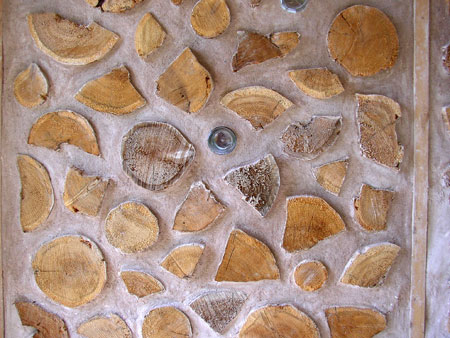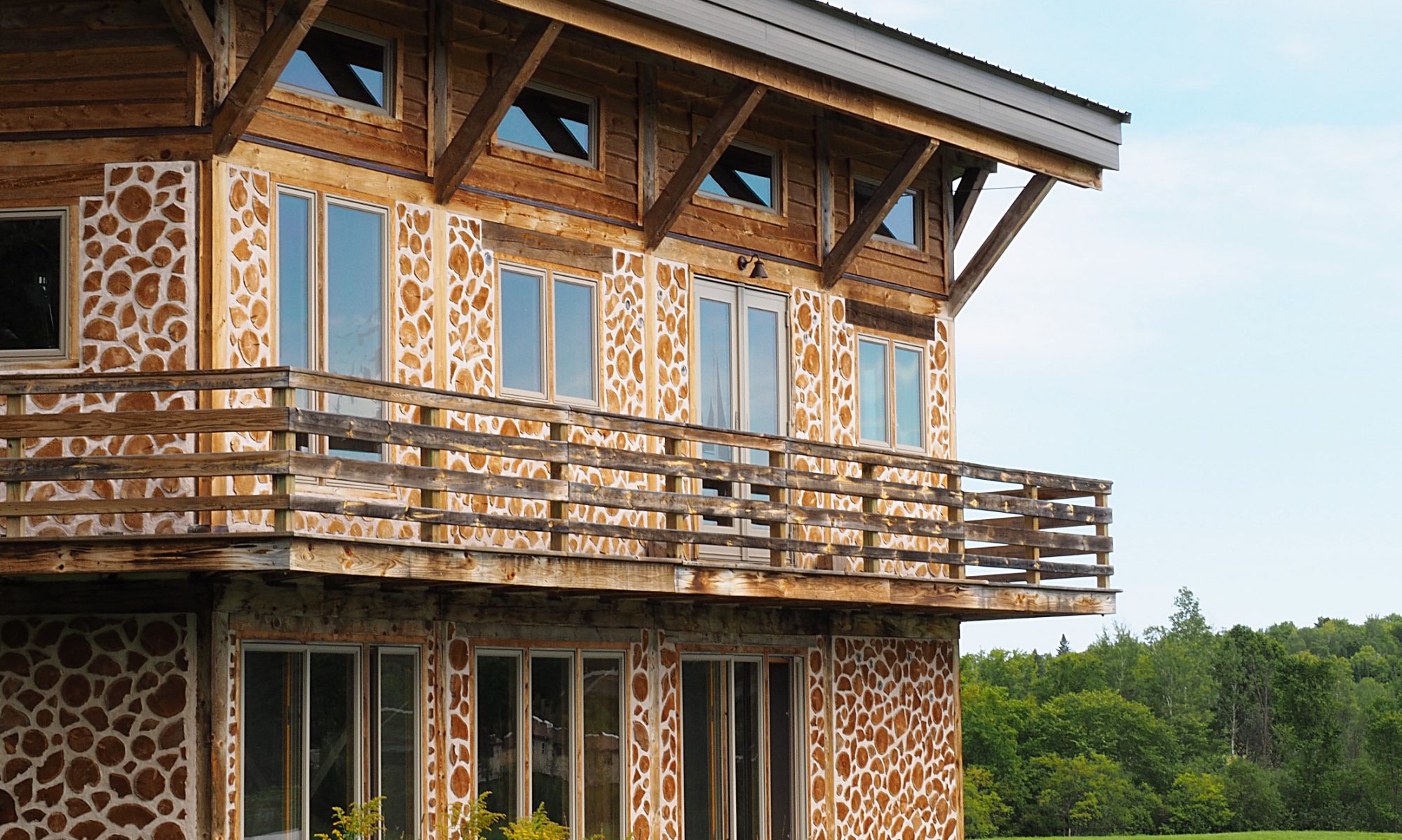We’ve spent the last three or four weeks cordwooding the rear wall of the shed. This is the first real log laying we’ve done on our own, and it’s allowed us to get our mortar mix right and work out the (ahem) kinks in our technique. Eventually we’ll get a mortar mixer, but we’ve been mixing by hand (well, by hoe) in a wheelbarrow, with the idea that we’ll get more “hands on” experience of what makes a good mortar mix. Also, it will be easier to cough up the cash for the mixer if we know what kind of back-breaking labor it’s saving us from.
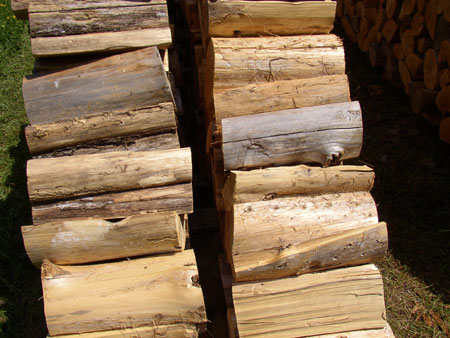
The first thing we have to do is some log prep – the logs we’ve cut, split and stacked are sixteen inces long (easier to manage), but the logs going into the wall are eight inches, so we cut them in half (using a jig attached to the sawbuck) and clean them up a bit. Here are some eight-inchers:
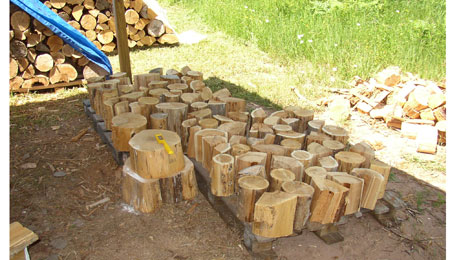
Now, at last, we can mix up some mud and start:
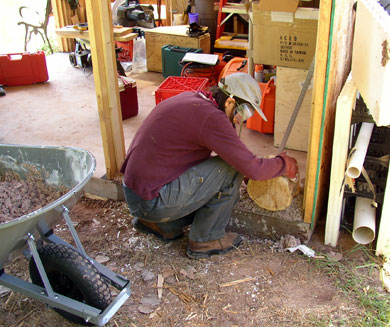
We keep laying logs in the mortar and glopping more mortar between and on top of them. After the first day, we’re off to a good start:
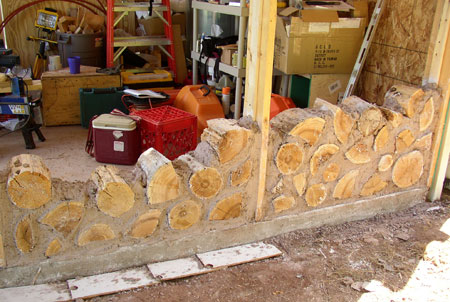
Cordwood wisdom says the top third of the wall takes as long as the first two-thirds, and this definitely seemed to be the case. But hey, wall!
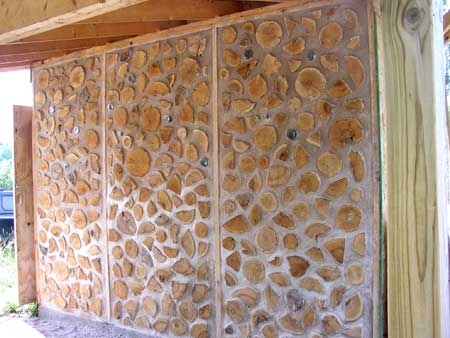
Mixed in with the log-ends are “bottle-ends,” two jars or bottles with the mouths taped together and laid up in the wall like a log. They let in a bit of light and color, and provide us with a visual history of our jar-food consumption.
